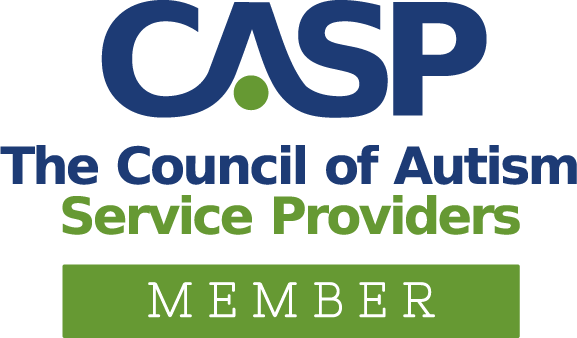If you have a loved one diagnosed with autism spectrum disorder (ASD), you likely consider it essential to have the necessary tools to support them in their learning processes. Children on the autism spectrum may struggle with communication, making it challenging to teach life skills and appropriate behaviors. Therefore, it is necessary to implement effective teaching methods adapted to their needs, such as ABA therapy and discrete trial training (DTT).
ABA therapy is a scientific, outcome-based, highly effective method for teaching new skills and behaviors to individuals with autism spectrum disorder (ASD). It utilizes effective teaching methods such as DTT and positive reinforcement to improve outcomes.
Every person on the spectrum has unique strengths and weaknesses. Some children with ASD may encounter difficulties acquiring essential skills for leading more independent lives. In such cases, discrete trial training (DTT) can be an effective solution for facilitating learning, as many students on the autism spectrum thrive with repetitive teaching methods. DTT is an educational strategy based on the principles of ABA therapy, and it can empower children with autism to unlock their potential consistently and effectively. This approach allows them to replicate their learning across settings and with different individuals.
At ABA Centers of America, we provide services and resources for neurodivergent individuals and their families. In this blog, we will explore discrete trial training, why it benefits many children with autism spectrum disorder, its advantages, and how parents can support DTT learning outside sessions.
What Is Discrete Trial Training?
Discrete trial training is a fundamental and highly effective technique used in ABA therapy to aid in the learning process of individuals with autism. It involves breaking down skills into smaller components, thus facilitating individual learning of these skill subsets.
Discrete trial training consists of the repetition of a single cycle of instruction until the child masters the skill. It involves five key steps:
- Initial instruction: For example, instructing the child to touch their head.
- Prompting: Providing assistance to help the child respond correctly, such as the teacher pointing to the child’s head.
- Child’s response: The child’s action, like touching their head.
- Motivational consequence: This step involves offering words of recognition and a small reward, such as a sticker, to reinforce positive behavior. Positive reinforcement is a fundamental aspect of discrete trial training and ABA therapy.
- Pause for rehearsal: Teachers usually wait 1 to 5 seconds before starting the subsequent trial. However, the pace and duration of the pause should be consistent to maintain the child’s attention.
Discrete trial training has been one of the most extensively studied and effective methods for instructing children with autism in various physical and verbal imitation skills. These skills may include activities like clapping, writing letters, or pronouncing letter sounds, for example.
Discrete trial training is effective in teaching various skills:
- Language skills: Receptive actions to instructions, such as “Show me your plate,” “Stand up,” and “Touch the number three,” can be elicited through discrete trials.
- Expressive language response: Discrete trial formats can teach expressive language responses, such as identifying body parts, colors, and objects.
- More complex skills: Discrete trial methods can also teach more advanced skills, such as dressing, using the telephone, and establishing routines.
These are just a few skills that can be acquired using a discrete trial training format.
Discrete Trial Training in ABA Therapy
Children with autism often require explicit, structured, and repetitive instruction to acquire skills that may come naturally to neurotypical children. The consistent and predictable nature of discrete trial teaching makes it a popular and effective method for teaching these skills to children with autism. Furthermore, the positive reinforcement integrated into discrete trial sessions provides additional motivation for children with autism to learn and interact.
The terms ABA therapy and DTT can sometimes be confused. However, it’s important to note that DTT is a specific ABA technique professionals employ to teach essential skills using repetition strategies, positive reinforcement, and expert guidance. DTT also supports learning communication skills, social interaction, and daily living skills in children with autism.
ABA therapy programs integrating Discrete Trial Training (DTT) feature more intensive and extended training sessions, where the discrete trial method assumes a central role. Within DTT programs, it’s a common practice to allocate several hours per day to one-on-one direct instruction, which may span months or even years. This approach allows for incorporating a substantial number of discrete trials, thus empowering behavioral professionals to deliver high-intensity education that significantly enhances the learning process.
By employing discrete trial teaching, ABA professionals can individualize therapy plans to align with each person’s learning style, needs, and abilities. Through positive reinforcement and skill breakdown, children with autism can progress toward their long-term goals and effectively apply these skills across different settings to attain success in life.
What Does Discrete Trial Training Look Like in Practice?
In DTT, skills are systematically and methodically broken down into smaller components. The teacher instructs each skill using a structured approach and employs motivational reinforcers, such as a piece of candy or a small toy, to reinforce and strengthen the desired behavior.
Let’s see discrete trial training in action with a color lesson.
- The teacher starts by asking the child to point to the color blue. If the child gets it right, they receive a sticker as a reward.
- Next, the teacher introduces the yellow color, praises the child for their response, and then asks them to identify both colors.
- Once the child successfully identifies all the colors, the teacher moves on to teaching the child to say the names of each color.
Advantages of Including Discrete Trial Training in ABA Therapy
Learning processes can be particularly challenging for someone with autism, and each individual often requires personalized support. Discrete trial training is one of the most effective evidence-based teaching techniques within ABA therapy. The use of the discrete trial training technique in ABA therapy positively impacts children’s development. This technique allows for the individualized pacing of skill acquisition. DTT provides a structured framework for learning, benefiting both short-term and long-term areas of development.
Discrete trial training in ABA therapy improves areas such as spatial reasoning, sustained attention, self-awareness, language, communication, interaction skills, and more.
Through consistent use of discrete trial training in ABA therapy, ABA professionals and caregivers can reduce frustration and confusion in children with autism, foster more positive learning interactions, and aid in developing stronger connections with their environment.
How Can Caregivers Support Discrete Trial Teaching?
Parents and caregivers of neuro-diverse children can play an essential role in their child’s learning processes outside therapy sessions. As mentioned earlier, consistency is vital to reinforcing DTT learnings and getting the most out of your ABA therapy.
Parents and caregivers should understand the basic concepts of DTT:
- Goal setting
- Break down tasks
- Constantly reinforce desired behavior
Participating in ABA therapy sessions by observing and asking questions to your child’s provider can significantly enhance your understanding of the concepts used in ABA therapy and DTT.
This knowledge equips you with the tools to apply these principles at home and in various contexts beyond therapy sessions, effectively supporting your child’s learning process.
Furthermore, caregivers should also be proficient in assessing their children’s progress and appropriately rewarding their achievements to sustain motivation, accomplish set goals, and cultivate more positive overall experiences.
Maintaining a guide or record of the acquired skills, their accuracy rate, and the assistance needed will help you better understand your child’s progress and the areas requiring more support. Be sure to communicate with your child’s ABA team to share any concerns you may have.
ABA Centers of America, ABA Therapy, and DTT
At ABA Centers of America, we provide ABA therapy services for the autism community, assisting children, adolescents, and their families in achieving the goals they envision for a fulfilling life. Our ABA therapy programs incorporate discrete trial training and positive reinforcement to help your child reach their full potential. Also, our highly trained team of professionals specializing in behavior deliver top-quality, comprehensive services.
If you are interested in ABA therapy and discrete trial training or have questions about our services, please call us at (844)-923-4222 or through the contact form here.







